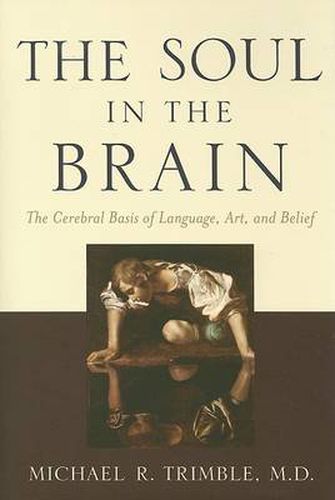Readings Newsletter
Become a Readings Member to make your shopping experience even easier.
Sign in or sign up for free!
You’re not far away from qualifying for FREE standard shipping within Australia
You’ve qualified for FREE standard shipping within Australia
The cart is loading…






In this provocative study, Michael R. Trimble, M.D., tackles the\ninterrelationship between brain function, language, art –\nespecially music and poetry – and religion. By examining the\nbreakdown of language in several neuropsychiatric disorders,\nneuroscientists have identified brain circuits that are involved\nwith metaphor, poetry, music, and religious experiences. Drawing on\nthis body of evidence, Trimble argues that religious experiences\nand beliefs are explicable biologically and relate to brain\nfunction, especially of the nondominant hemisphere.
\n
Inspired by the writings and reflections of his patients – many\nof whom have epilepsy, psychosis, or affective disorders – Trimble\nasks how the human species, so enamored of its own logic and\ncritical facilities, has held from the dawn of civilization strong\nreligious beliefs and a reverence for the arts. He explores topics\nsuch as the phenomena of hypergraphia and hyper-religiosity, how\nreligious experiences and poetic expression are neurologically\nlinked with our capacity to respond to music, and how\nneuropsychiatric disorders influence behaviors related to artistic\nexpression and religiosity by disturbing brain function.
\n
With the sensitivity of a dedicated doctor and the curiosity of\nan accomplished scholar, Trimble offers an insightful analysis of\nhow the study of people with paradigmatical neuropsychiatric\nconditions can be the cornerstone to unraveling some of the\nmysteries of the cerebral representations of our highest cultural\nexperiences.
\n\n
$9.00 standard shipping within Australia
FREE standard shipping within Australia for orders over $100.00
Express & International shipping calculated at checkout
In this provocative study, Michael R. Trimble, M.D., tackles the\ninterrelationship between brain function, language, art –\nespecially music and poetry – and religion. By examining the\nbreakdown of language in several neuropsychiatric disorders,\nneuroscientists have identified brain circuits that are involved\nwith metaphor, poetry, music, and religious experiences. Drawing on\nthis body of evidence, Trimble argues that religious experiences\nand beliefs are explicable biologically and relate to brain\nfunction, especially of the nondominant hemisphere.
\n
Inspired by the writings and reflections of his patients – many\nof whom have epilepsy, psychosis, or affective disorders – Trimble\nasks how the human species, so enamored of its own logic and\ncritical facilities, has held from the dawn of civilization strong\nreligious beliefs and a reverence for the arts. He explores topics\nsuch as the phenomena of hypergraphia and hyper-religiosity, how\nreligious experiences and poetic expression are neurologically\nlinked with our capacity to respond to music, and how\nneuropsychiatric disorders influence behaviors related to artistic\nexpression and religiosity by disturbing brain function.
\n
With the sensitivity of a dedicated doctor and the curiosity of\nan accomplished scholar, Trimble offers an insightful analysis of\nhow the study of people with paradigmatical neuropsychiatric\nconditions can be the cornerstone to unraveling some of the\nmysteries of the cerebral representations of our highest cultural\nexperiences.
\n\n